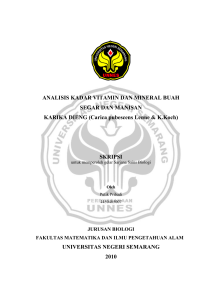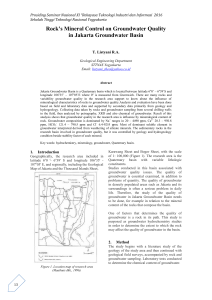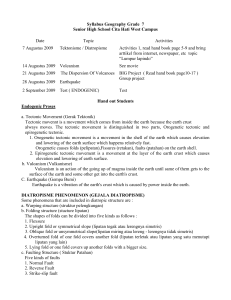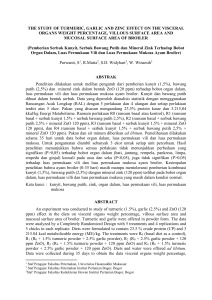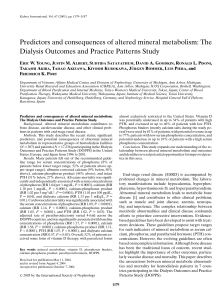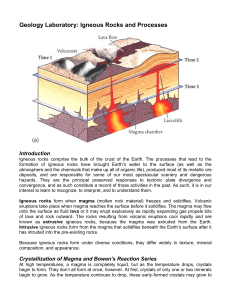sifat fisik mineral - elista:.
advertisement
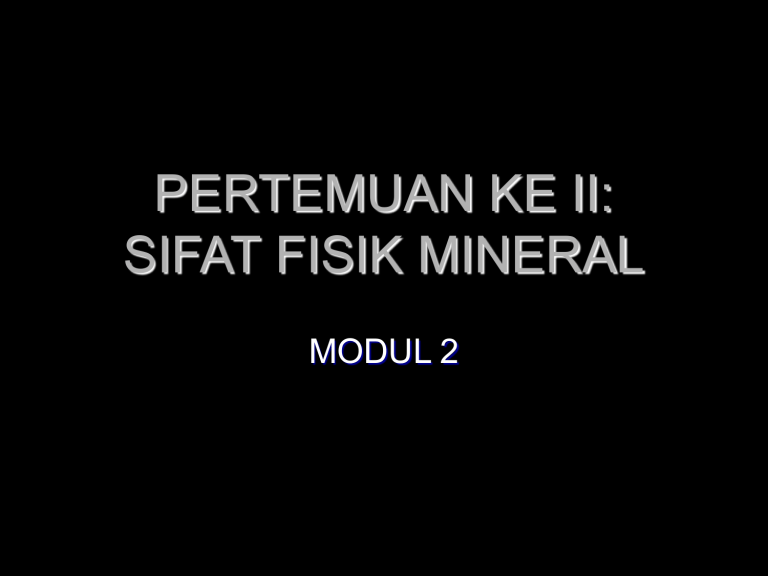
PERTEMUAN KE II: SIFAT FISIK MINERAL MODUL 2 IDENTIFIKASI MINERAL Warna Bentuk Kristal Cerat Kilap Kekerasan Belahan dan Pecahan Sifat lain Warna Streak (Cerat) Black - Graphite Black - Pryite Black - Magnetite Black - Chalcopyrite Gray - Galena Limonite - Yellowbrown Hematite - Red-brown LUSTER (KILAP): refleksi mineral dalam menangkap sinar: ada dua yaitu metalik dan non-metalik Non metalik: kilap kaca, tanah (earthy) dan tidak memantulkan sinar (dull) Cleavage (Belahan) Mengikuti bentuk kristal Fracture (Pecahan) Yaitu bentuk permukaan antar atom penyusun mineral saat mineral pecah atau hancur Pecahan: beraturan (regular) tidak beraturan (irregular) Permukaan pecahan: Kasar (splinterry) Halus (smooth) berbentuk kurva (conchoidal): seperti gelas saat pecah. Kekerasan Crystal Shape (Bentuk Kristal) Kubik Prismatik Tabular (berlembar) Menjarum Hexagonal Piritohedron Sifat Lain Magnetism - A few minerals are attracted to a magnet or are themselves capable of acting as magnets (the most common magnetic mineral is magnetite). Because these are so rare, this property helps narrow the possibilities drastically when trying to identify an unknown specimen. Feel - Some minerals, notably talc and graphite, feel greasy or slippery when you rub your fingers over them. The greasiness occurs because bonds are so weak in one direction that your finger pressure alone is enough to break them and to slide planes of atoms past neighboring atomic layers Taste - Geologists use as many senses as possible in describing and identifying minerals. Taste is one of the last tests to be conducted, because some minerals are poisonous. Some minerals taste salty-most notably halite (salt). Sylvite, a mineral similar in all other properties to halite, tastes bitter. Taste is thus a diagnostic property because it distinguishes between these minerals. NEVER TASTE A MINERAL UNLESS INSTRUCTED TO! Reaction with Dilute Hydrochloric Acid - This is actually a chemical property rather than a physical attribute of a mineral. Minerals containing the carbonate anion (C03)2- effervesce ("fizz") when a drop of dilute hydrochloric acid is placed on them. Carbon dioxide is liberated from the mineral and bubbles out through the acid, creating the fizz. This test is best performed on powdered minerals. Calcite (calcium carbonate) will effervesce readily in either massive or powdered form, but dolomite (calciummagnesium carbonate) reacts best as a powder.




